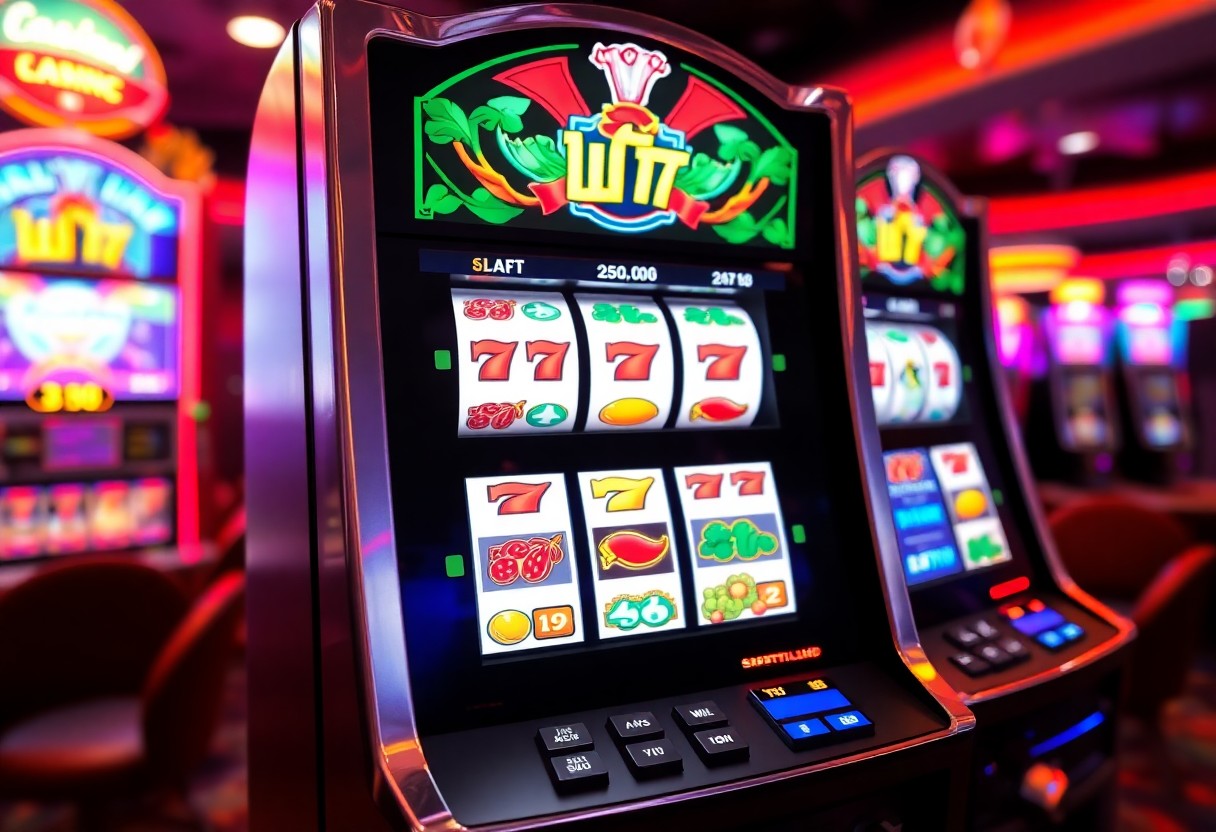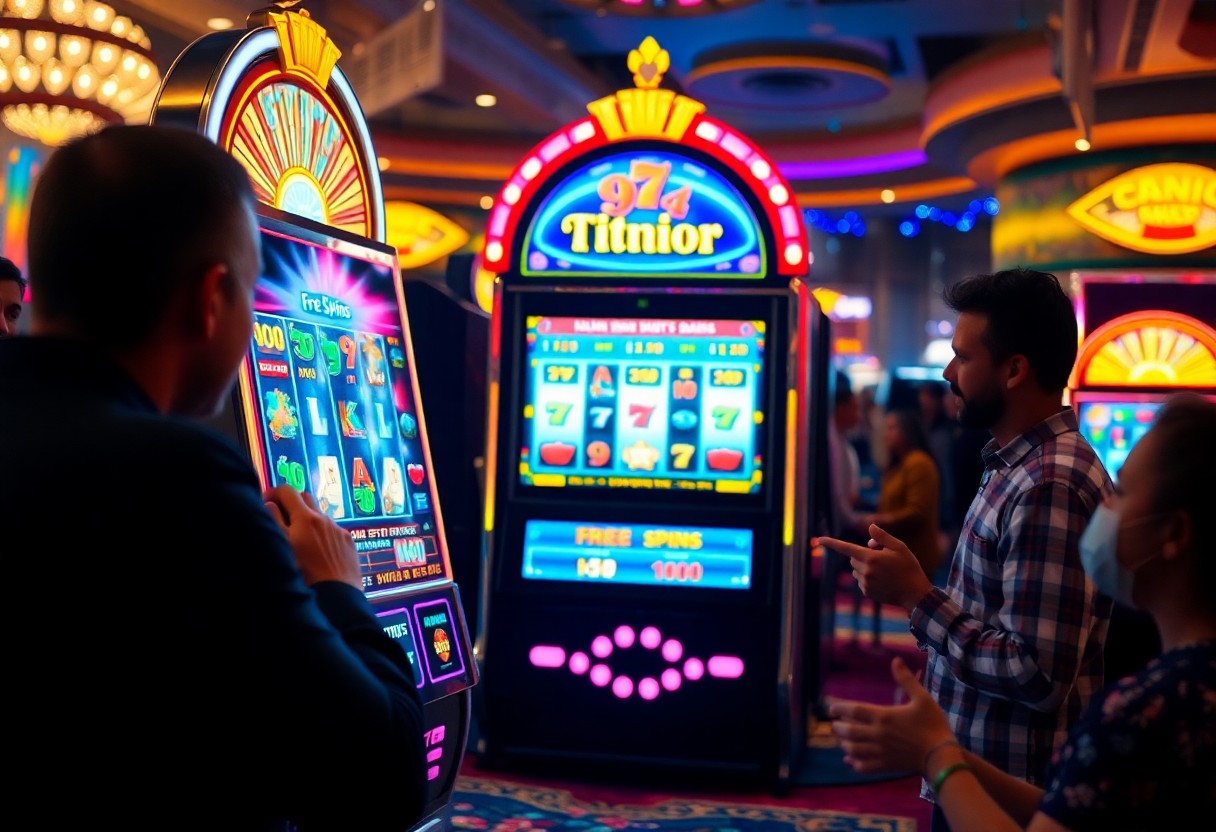Mathematics plays a pivotal role in how slot machines function, influencing everything from the odds of winning to the overall gaming experience you encounter. By delving into the intricacies of slot algorithms, you gain insight into the mechanisms behind wins and losses. Understanding these algorithms can enhance your gameplay and help you navigate the world of slots with informed strategies. Join us as we explore the technical aspects of these thrilling machines and unveil the secrets that dictate your chances at winning.
The Core Mechanics of Slot Algorithms
Understanding how slot algorithms operate requires a look into their core mechanics. Each slot machine utilizes a carefully crafted combination of programming, randomness, and rules to dictate the outcome of each spin. These mechanics ensure that gameplay remains fair, while also keeping players engaged. However, the combination of these elements can significantly influence your gaming experience and potential payouts, highlighting the importance of grasping their functions.
The Role of Random Number Generators (RNGs)
Random Number Generators (RNGs) are at the heart of every slot algorithm, generating countless random outcomes in milliseconds. When you press the spin button, the RNG determines the result of that spin by producing a random sequence of numbers that ideally cannot be influenced or predicted. This randomness ensures that results are fair and unbiased, giving you confidence in the integrity of the game.
How Paylines and Bet Sizes Influence Outcomes
Your choice of paylines and bet sizes plays a significant role in determining the outcomes during gameplay. Each active payline represents a possible winning combination, and the more of them you activate, the greater your chances of hitting a win. Additionally, your bet size directly affects potential winnings; increasing your stake can yield higher rewards, but also amplifies the risks involved.
Specifically, activating more paylines increases the likelihood of scoring a payout since any matching symbols along those lines can boost your wins. For instance, in a typical slot game with 25 paylines, you stand a better chance of winning compared to playing with just one. Similarly, your bet amount influences the payout multipliers associated with winnings, meaning that if you wager higher amounts, your wins can be more substantial. Consequently, balancing your bet sizes and the number of active paylines is crucial for optimizing your gameplay strategy while minimizing losses. This strategic approach can greatly enhance your overall gaming experience.
Decoding Return to Player (RTP) Rates
Understanding Return to Player (RTP) rates is crucial for grasping how slot algorithms work to provide players with a realistic expectation of their potential returns. RTP is a percentage reflecting the amount of wagered money a slot machine will pay back to players over time. Typically, this figure ranges from 85% to 98%, with higher percentages indicating better long-term player payouts. This metric allows you to make informed choices about which slots to engage with, ultimately influencing your gaming experience.
The Mathematical Foundation of RTP
The mathematical underpinnings of RTP are grounded in probabilities and long-term averages. Slot games generate outcomes based on Random Number Generators (RNGs), which ensure every spin is independent and random. Over millions of spins, the RTP percentage reveals how much of the wagered money is expected to be returned to players. For instance, a slot with a 95% RTP means that, theoretically, you could expect to receive $95 for every $100 wagered if you played indefinitely, highlighting the game’s design to balance profit for the casino and rewards for players.
The Impact of RTP on Player Expectations
Your perception of a slot machine’s fairness and desirability hinges greatly on its RTP. A higher RTP often translates into a better experience, as you’ll feel more assured that your money has a chance of being rewarded. If you’re deciding between two games, knowing that one has a 96% RTP while the other is at 89% can influence whether you pick the potentially lucrative option or the one that offers less favorable odds.
Choosing games based on RTP can shape your overall enjoyment and financial strategy. If you know that a particular game pays back 96% over time, you may feel more confident placing larger bets or playing for extended sessions. Conversely, opting for a game with a lower RTP might lead you to expect a shorter session or less of a return on your investment. Understanding these dynamics empowers you to make strategic gameplay decisions and potentially enhances your long-term success in the world of slots.
The Significance of Volatility in Slot Games
Volatility, or variance, plays a vital role in your slot gaming experience, determining how often and how much you can win in a session. High volatility slots offer larger payouts but less frequent wins, while low volatility games promise smaller, more frequent wins. Understanding the volatility of a slot game helps you make informed decisions based on your risk appetite and gaming strategies, tailoring your experience to align with your financial comfort and entertainment needs.
Understanding Low, Medium, and High Volatility
Low volatility slots provide a steady stream of smaller wins, making them ideal for players who prefer longer play sessions with less risk. Medium volatility strikes a balance, offering a mix of moderate wins and reasonable frequency, appealing to those looking for both excitement and stability. High volatility slots deliver infrequent but substantial payouts, perfect for thrill-seekers willing to take risks for the chance of hitting big jackpots.
Strategies to Choose the Right Slot Game Based on Volatility
Selecting a slot game based on its volatility should align with your gaming style and bankroll management. If you enjoy the thrill of chasing big wins and don’t mind longer dry spells, high volatility slots might be your best bet. Conversely, if your priority is sustaining playtime and enjoying frequent wins, low volatility slots suit you better. Always consider your budget: with high volatility games, it’s wise to have a larger bankroll to withstand the ups and downs, while low volatility options allow for more extended play with a tighter budget.
To refine your strategy, assess your playing goals and budget constraints. For a fun, casual experience with less pressure, low volatility slots can keep you engaged over more extended periods without major financial stress. Alternatively, if you have a larger bankroll and a desire for higher stakes, high volatility slots can maximize the thrill, making each spin feel impactful. Keep track of your wins and losses to gauge how well a specific volatility suits your preferences, allowing adjustments as necessary to enhance your overall enjoyment and success.
Behind the Scenes: Certification and Regulation
The integrity of slot machines is maintained through strict certification and regulation processes. Various organizations and government bodies ensure that the algorithms behind these games are fair, transparent, and operate within defined parameters. These regulatory frameworks protect players by establishing standards for random number generation (RNG), payout ratios, and overall game performance, making games not just entertaining but also trustworthy.
The Importance of Third-Party Testing Labs
Third-party testing labs play an crucial role in the certification process of slot algorithms. These independent agencies assess and verify software used by slot machines, ensuring that it meets both regulatory standards and player expectations. By scrutinizing algorithms for randomness and fairness, they provide an additional layer of accountability, giving you confidence in the legitimacy of the games you play.
How Government Regulations Shape Fair Gameplay
Government regulations outline comprehensive guidelines that gaming operators must follow to ensure fair gameplay. These regulations typically mandate regular audits, compliance with payout minimums, and strict adherence to RNG standards. For instance, jurisdictions might require a minimum payout of 85%, meaning that for every $100 wagered, at least $85 is returned to players over time. This not only curbs fraudulent practices but also ensures you have a reasonable chance of winning.
In addition, regulations often specify the frequency of audits and the proficiency levels required for employees overseeing these gaming operations. For example, many regions enforce measures requiring regular integrity checks of gaming software and hardware. This approach not only minimizes the risk of manipulation but also builds player trust. The involvement of gaming commissions and their ability to impose penalties on non-compliant operators furthers this aim, ensuring that the regulations are taken seriously and enhancing the overall fairness of the gaming experience.
The Psychological Elements: Player Experience and Engagement
The experience you have while playing slots goes beyond mere numbers on a screen. Insights from psychology reveal that various factors play a significant role in enhancing player engagement and retention. Elements such as the anticipation of wins, the thrill of gameplay, and the sensory stimulation provided by visuals and sounds collectively shape your emotional response and connection to a game. The entire environment, combined with your perceptions and expectations, contributes to a captivating experience that keeps you returning for more.
Designing for Attraction: Colors, Sounds, and Symbols
Colors, sounds, and symbols are meticulously chosen to evoke specific emotions and responses during play. Vibrant colors can create excitement, while soft hues may promote relaxation; for instance, slots featuring bright reds and yellows often signal high-energy gameplay. Sounds, like celebratory jingles or suspenseful music, build tension and joy, enhancing the thrill of potential wins. Familiar symbols – from fruits to lucky sevens – not only draw on nostalgia but also hold significant meaning for you, making the gaming experience more relatable and enjoyable.
The Role of Gamification in Enhancing Slot Play
Gamification plays a vital role in enhancing your slot experience by integrating game-like elements such as quests, achievements, and leaderboards. This approach transforms mundane gameplay into an engaging adventure, motivating you to achieve specific goals. For instance, receiving rewards for completing certain tasks adds an extra layer of excitement, creating both a sense of accomplishment and community among players. By leveraging these strategies, slot developers tap into your intrinsic desire to compete and succeed, ultimately increasing your enjoyment and time spent playing.
Conclusion
Presently, understanding the science behind slot algorithms enhances your chances of enjoying a rewarding gaming experience. By familiarizing yourself with how Random Number Generators (RNGs) operate, as well as the concepts of Return to Player (RTP) and volatility, you can make more informed choices when selecting games. Consequently, your gameplay can become not only more enjoyable but also strategic, aligning your preferences with the intricacies of the underlying technology. With this knowledge, you are better equipped to navigate the vibrant world of slot gaming.




